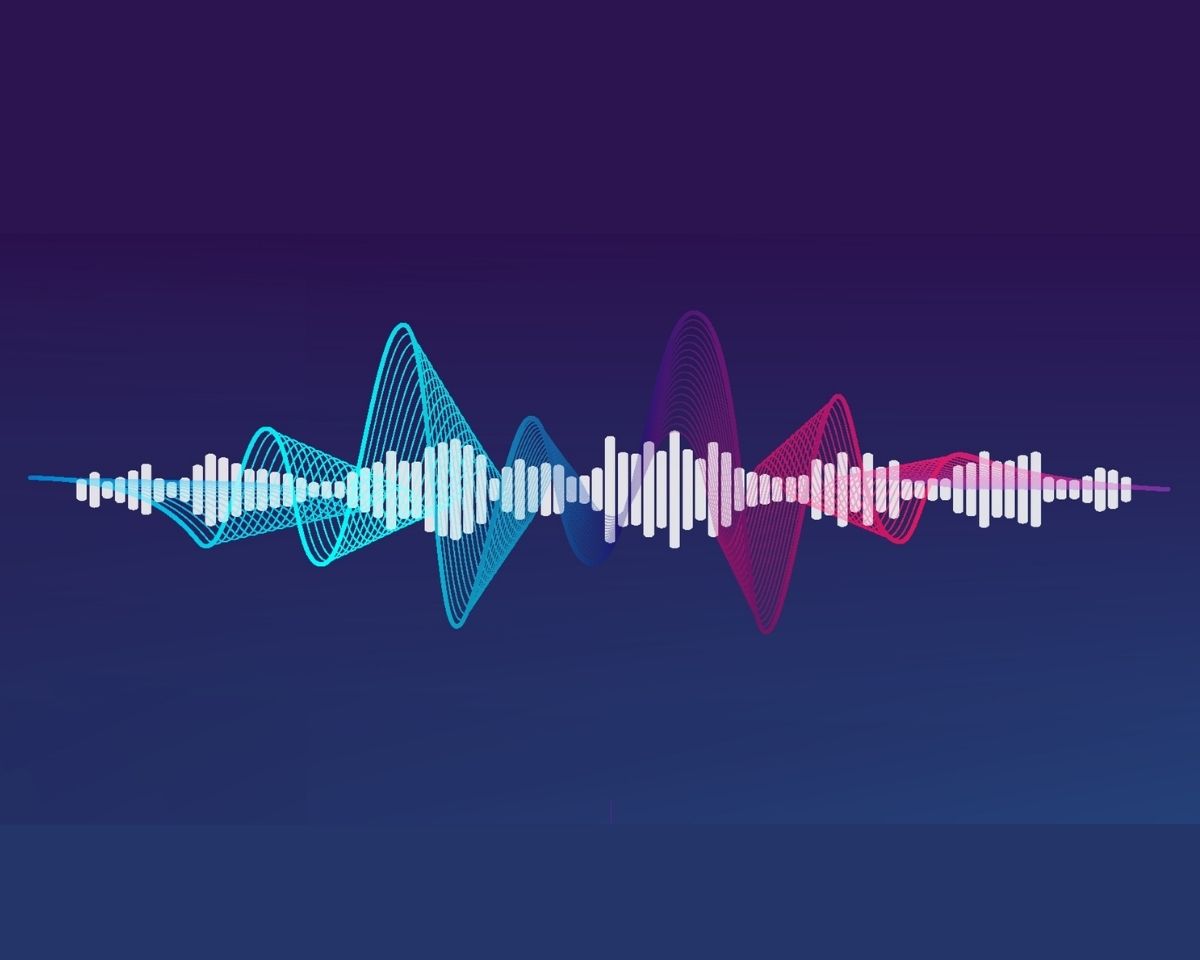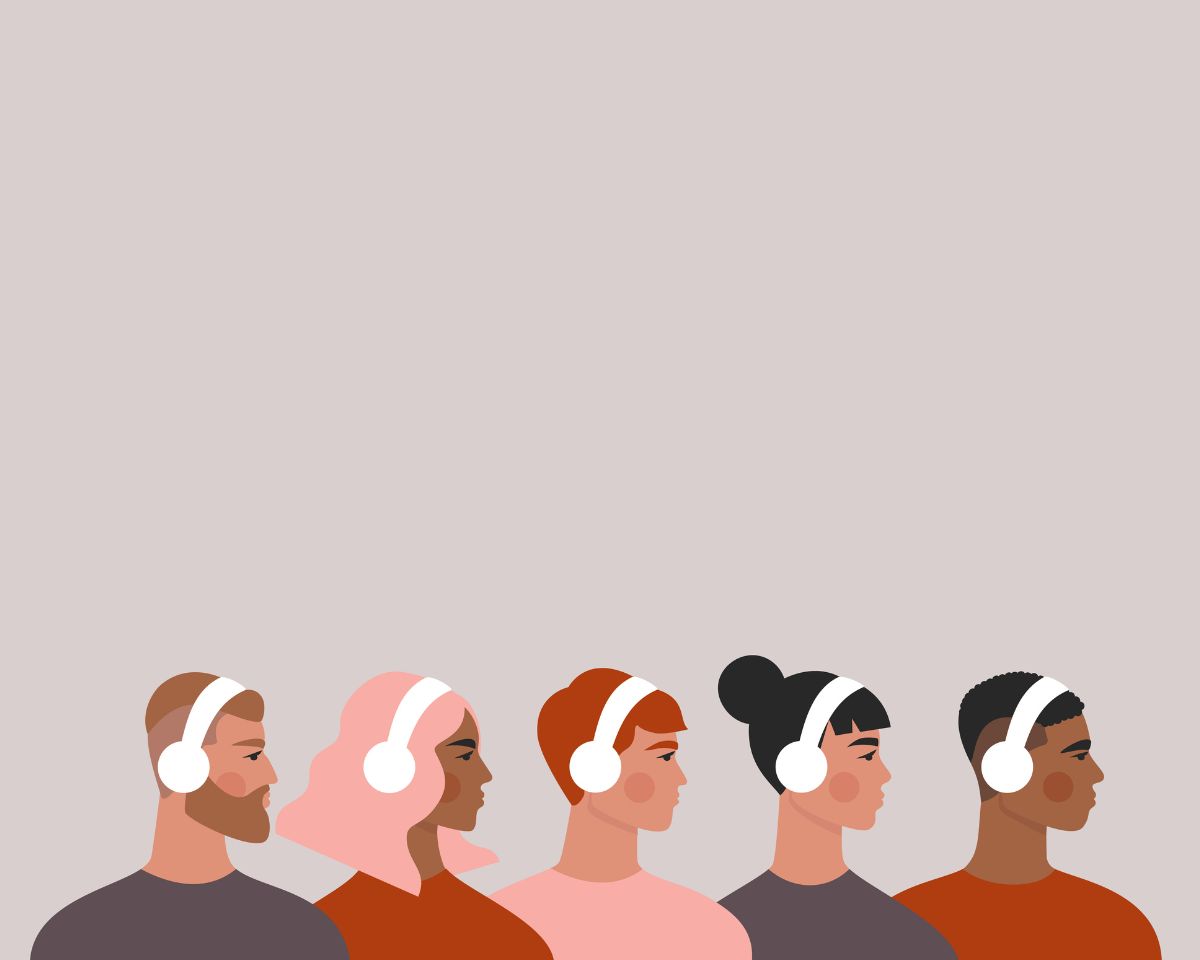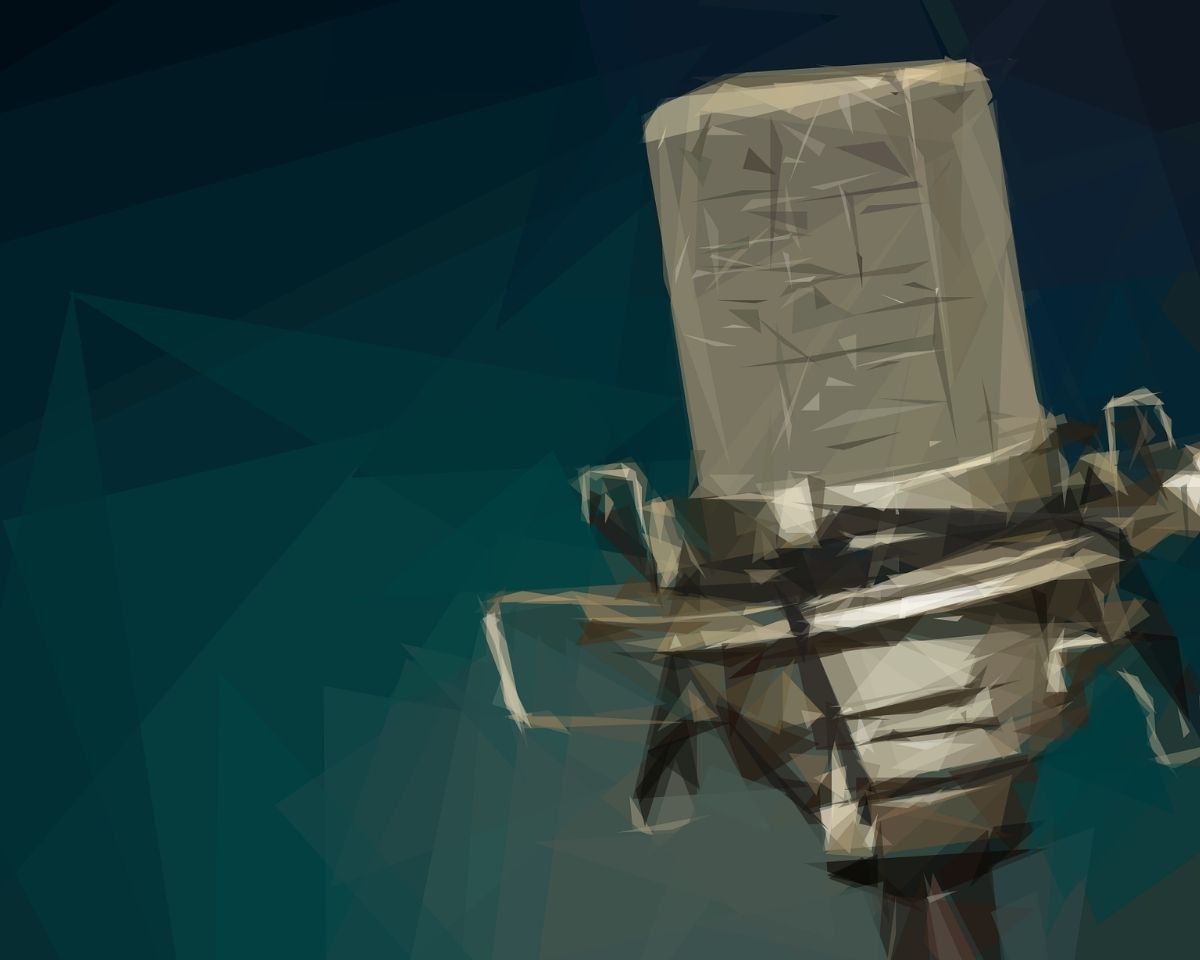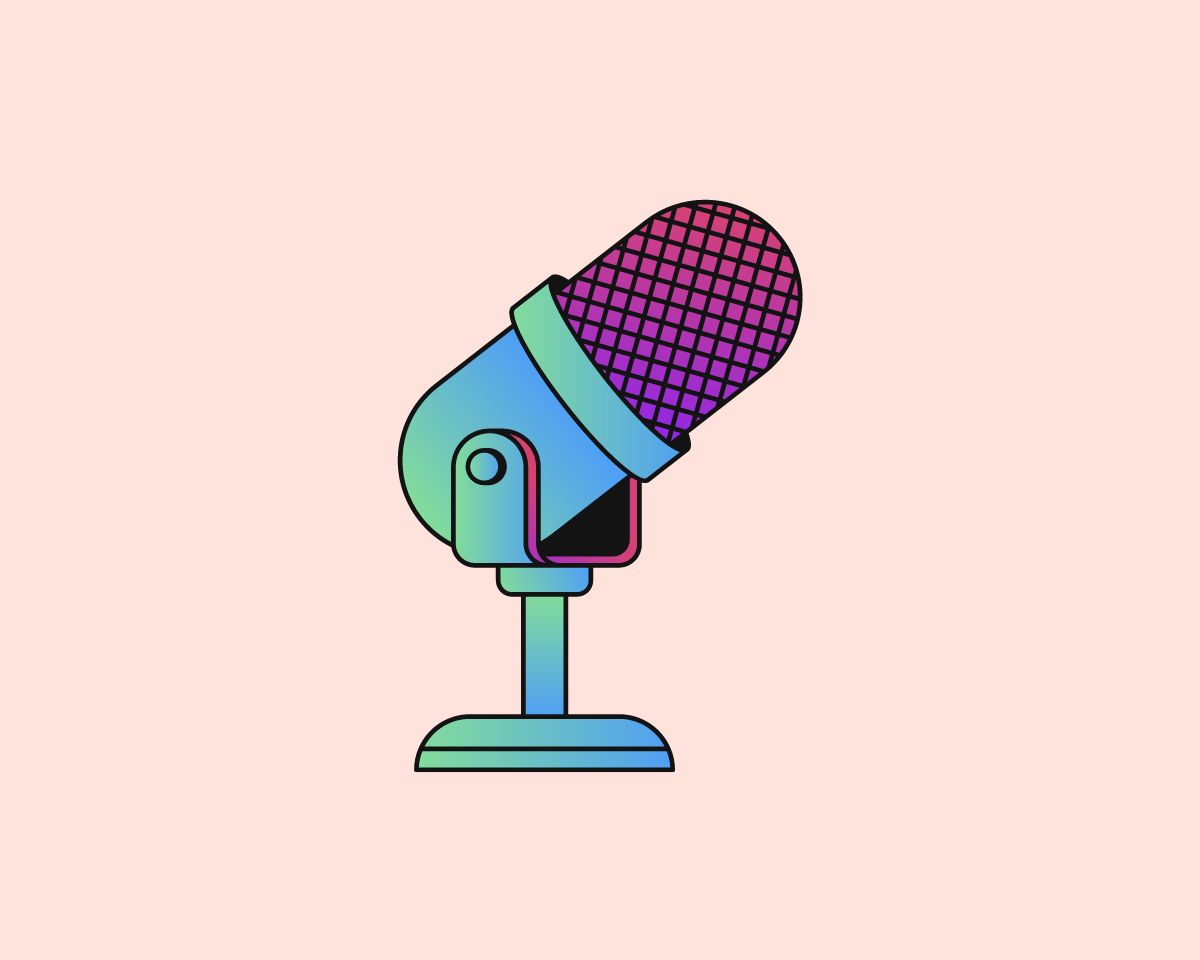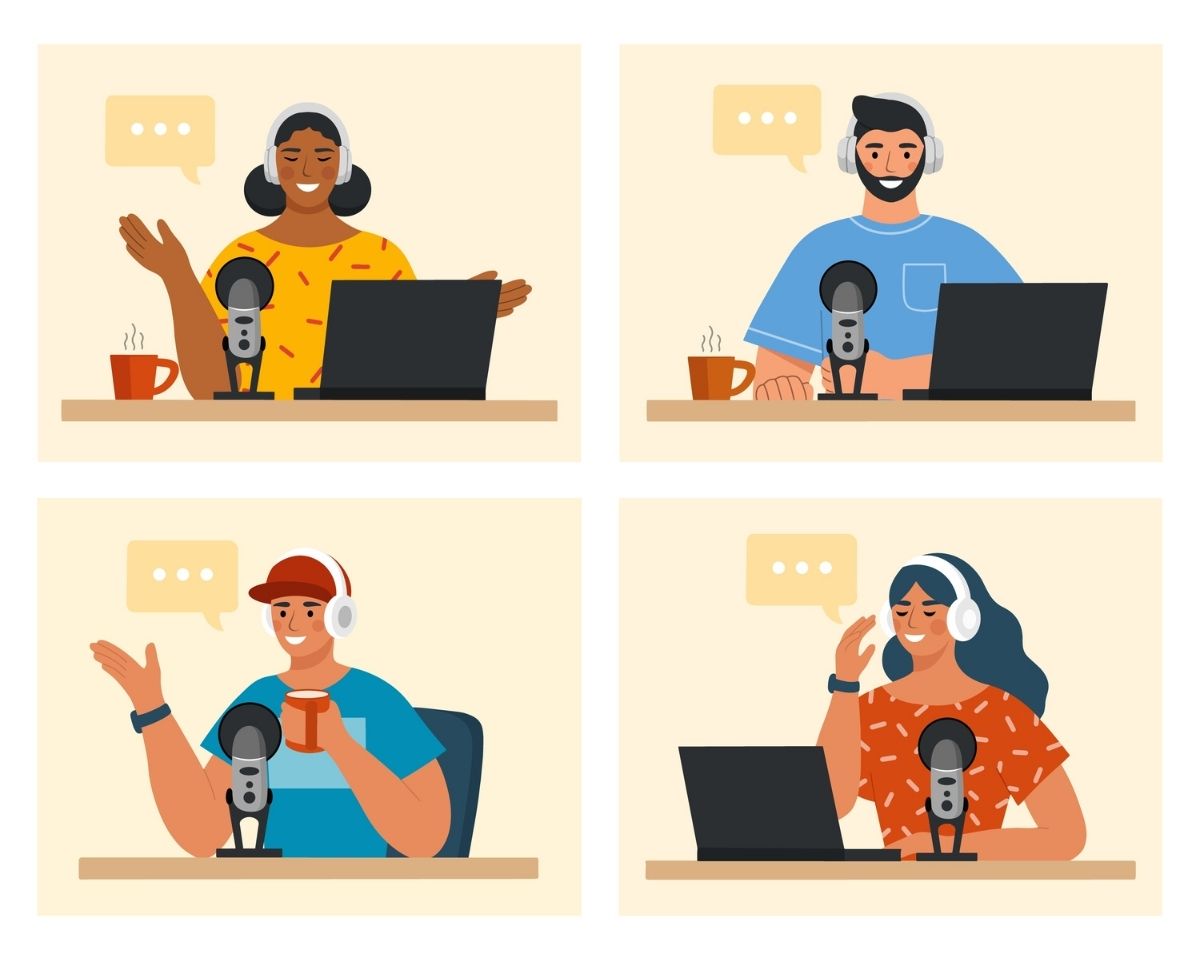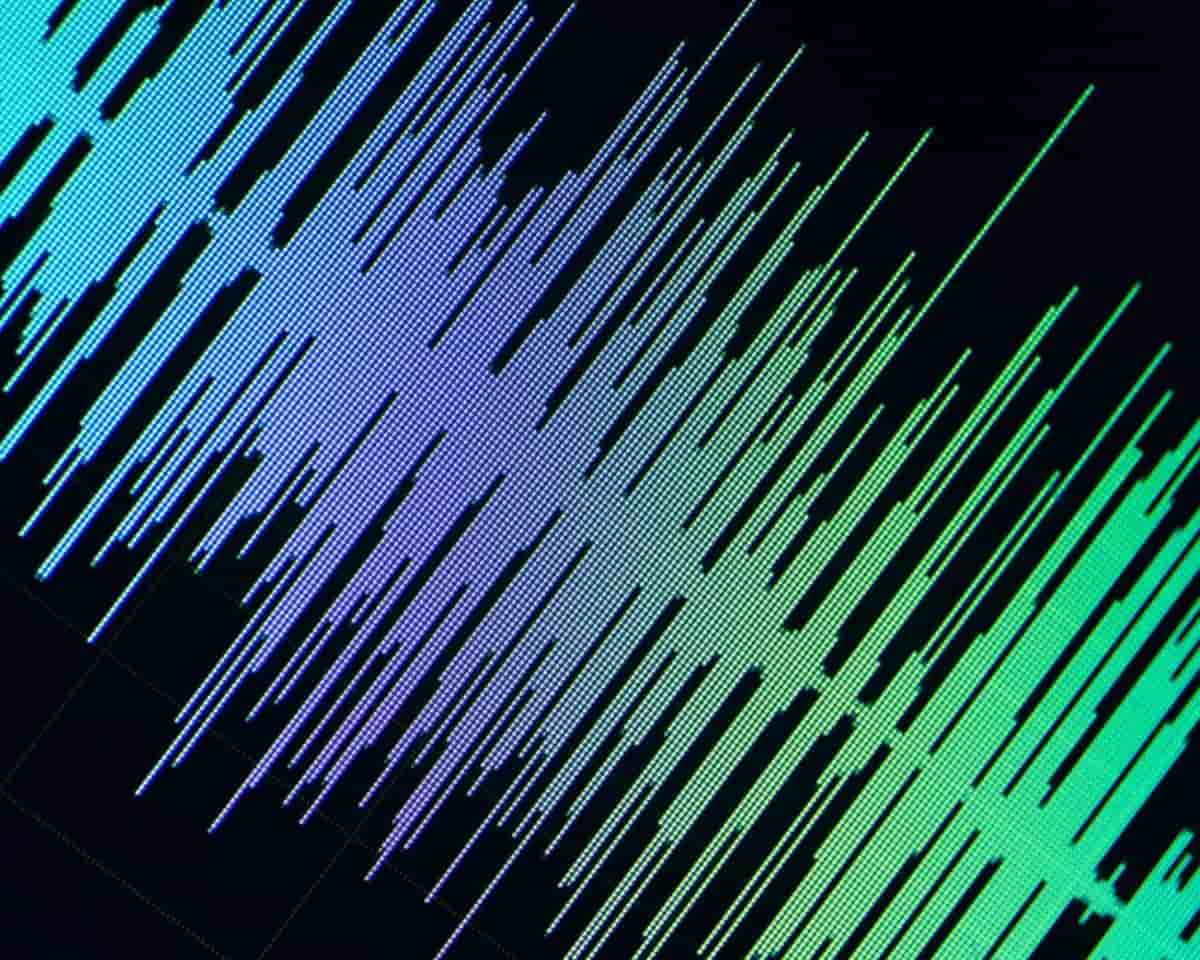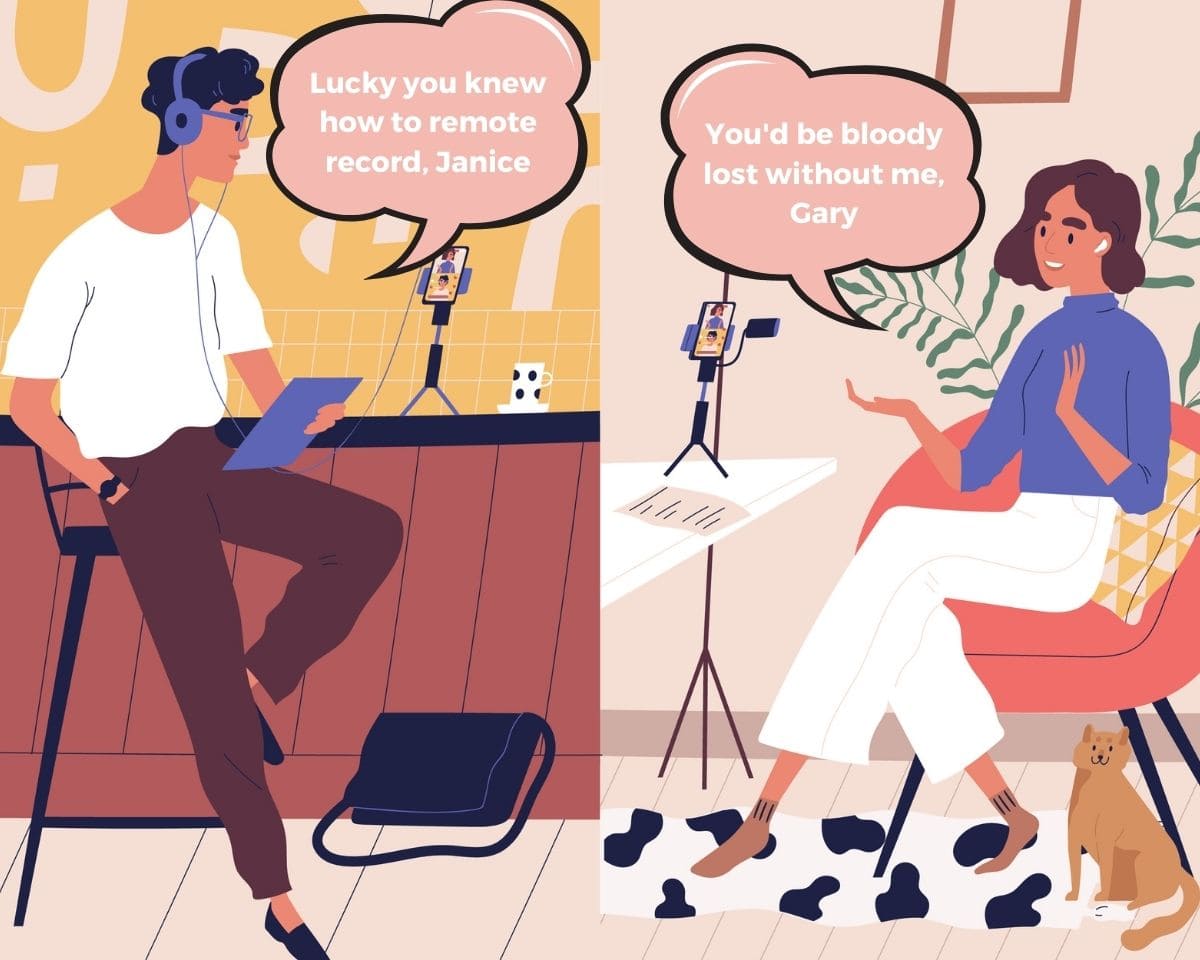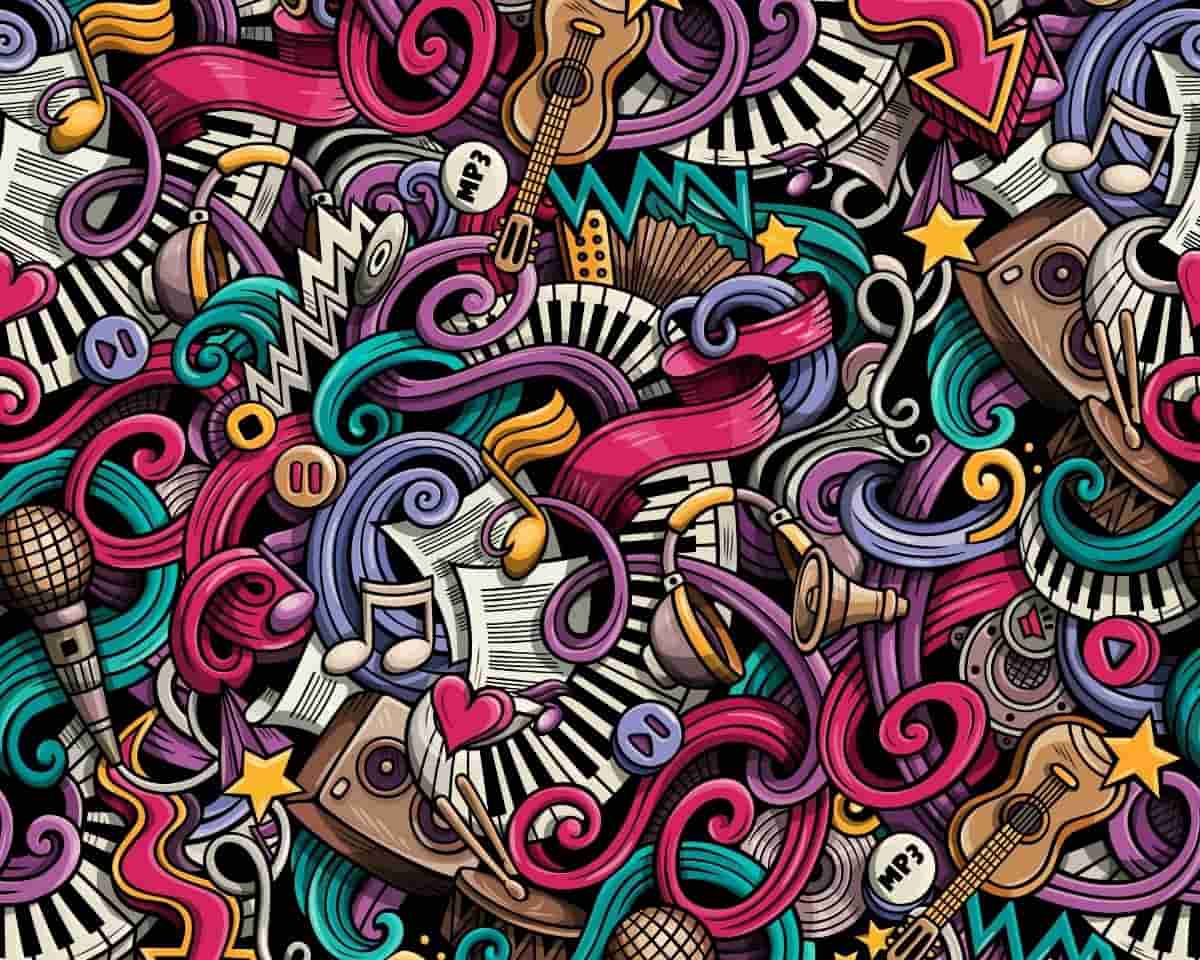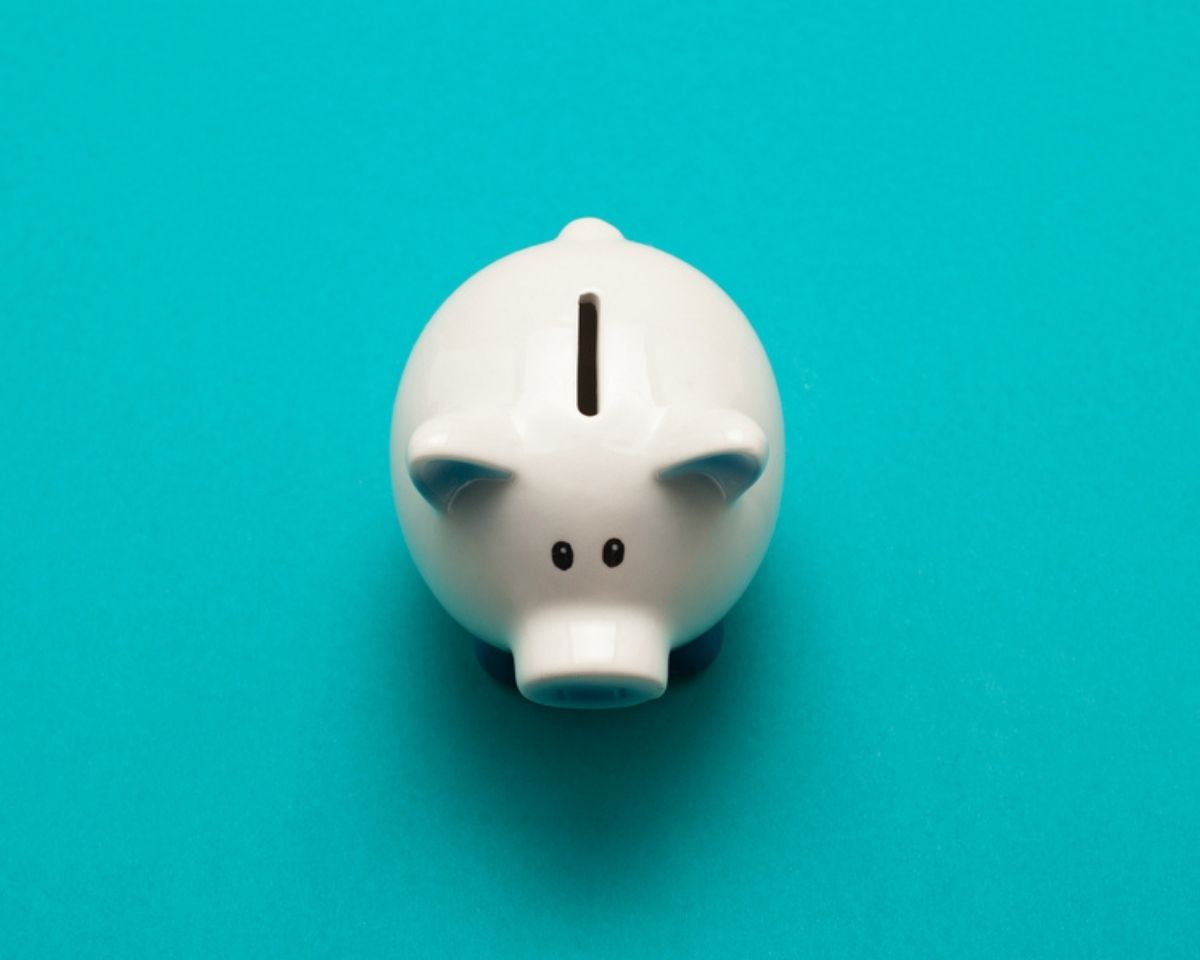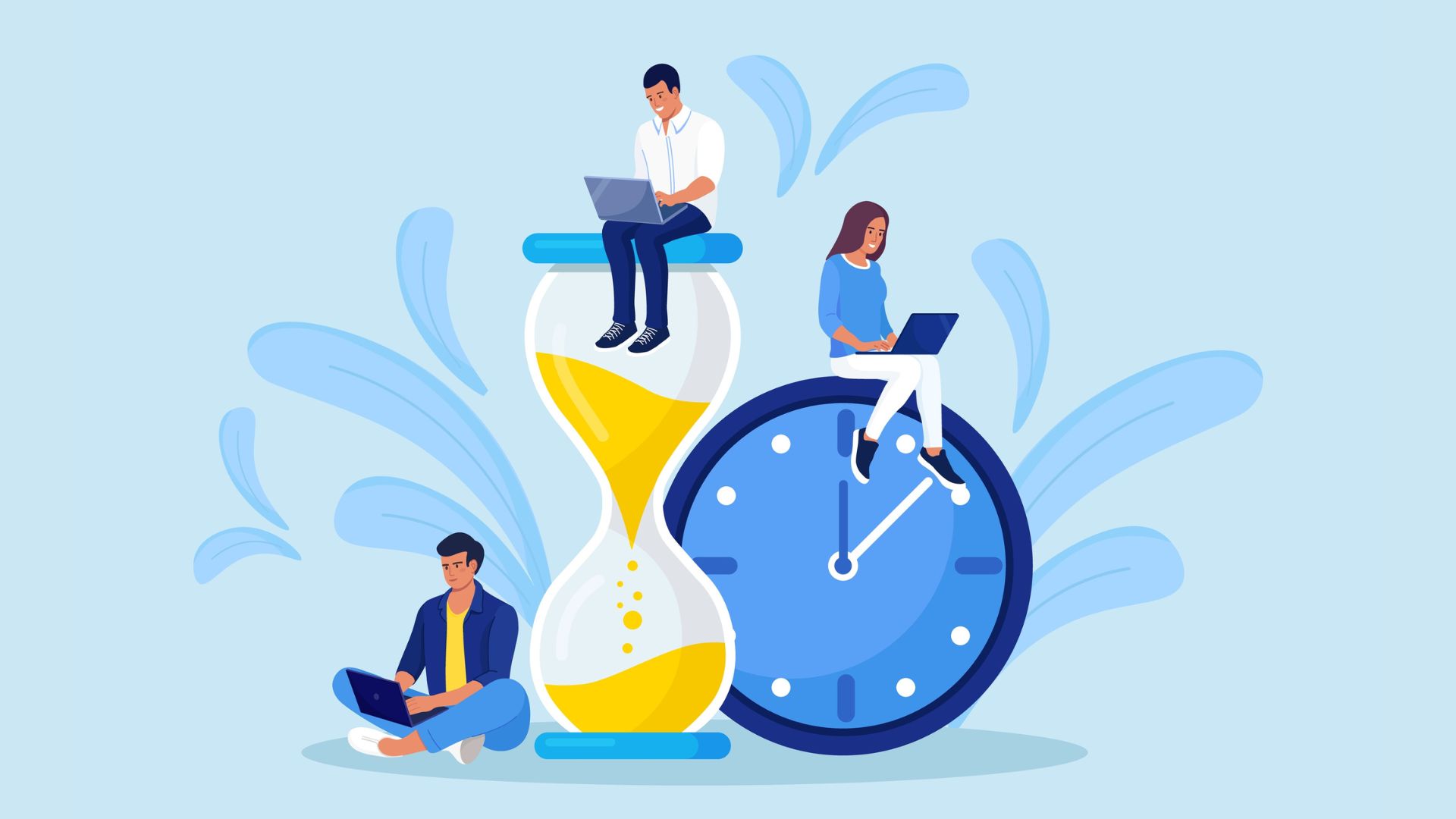Why make extra work for yourself?
Editing your podcast takes up a huge amount of time and you don’t want to make the process any longer than it has to be. Or, heaven forbid, get to the editing stage and realise your audio is actually so low quality it’s unusable.
There are a lot of things you can do when you’re recording a podcast to ensure, when you’re slicing away like Edward Scissorhands, you’re not thinking “This is a nightmare!”
[button text=”Apple” url=”https://itunes.apple.com/au/podcast/podschool-learn-how-to-create-professional-podcast/id1239671724?mt=2″ class=””] [button text=”Google” url=”https://www.google.com/podcasts?feed=aHR0cHM6Ly9yc3Mud2hvb3Noa2FhLmNvbS9yc3MvcG9kY2FzdC9pZC8xMzAz” class=””] [button text=”Spotify” url=”https://open.spotify.com/show/1Q2L51iY2sIL8BEkAKyxZj” class=””]
How to improve audio quality when you’re recording a podcast
Wear headphones
For the love of all things Holy, any time you’re doing anything that involves audio, please wear headphones!
Your ears alone are not sensitive enough to pick up what the microphone is registering. But if you put your headphones on you’ll be privy to all sorts of subtle sounds like wind noise, an air conditioner buzzing in the background or a dull hum in the room you wouldn’t have heard otherwise.
Basically, you don’t want to hear any of these things for the first time when you’re sitting down to edit because at that point it’ll be too late to fix.
If you’re wearing headphones you can adjust things as you’re recording or move to a different space rather than recognising you should have done that when it’s too late.
Test the levels
Make sure, before you get rolling, you have a conversation with your guest to set the levels (volume) for each microphone. And try to get them to speak as close to their natural conversational volume as possible.
Often they’ll be quieter when they’re testing the mic and as soon as they get excited or laugh into the microphone when you’re recording the podcast, it’ll blow out the levels.
Ideally, you want to keep the levels lower and lift them later in the editing phase rather than setting them too high and ending up with un-usable audio. But if you’ve got headphones on and your guest’s softer or louder when you get going you can adjust the dials on your recording device/mixer.
If you record the podcast and your audio is too “hot” (so loud it puts the audio levels into the red) you won’t be able to fix that in post and it’ll end up in the bin.
Use pop filters
If you have someone “popping” into the microphone every two seconds (the sound that happens when you say words with harsh consonants like ‘p’ and ‘b’), you can fix it in the edit but it takes a lot of time and effort.
Pop filters or pop guards are the little foamy covers that go over the top of your microphone to reduce popping when you record a podcast. They’re not foolproof but they definitely help.
The other thing that’s more important is good mic technique. To avoid popping you need to speak slightly across the microphone instead of right down the barrel but it takes a bit of trial and error (and listening in your headphones) to get it right.
If you’re listening as you record your podcast, you’ll be able to hear if this is happening and adjust the way your guest is holding their microphone, get them to re-record what they’ve said if the popping is really bad or adjust yourself so your mic technique is on point.
Get out of the wind
Wind noise is your enemy because if it blasts all over your audio there’s nothing you can do to fix it. Again, headphones will be your best friend here because you’ll never pick up how bad it is with your ears alone.
Early in my career, I recorded an interview outside where I didn’t even notice the wind. But when I got back to the studio I realised the only good place to put the audio was in the bin.
I can tell you right now, that feeling is not something you’ll ever want to repeat so learn from my mistakes and fix things in the moment so you’re not kicking yourself later.
Don’t record in an echoey room
The other thing that can be a real pain when you’re editing is room echo.
If you’re in a room that’s cavernous and has plenty of windows and tiles, editing can be very difficult. This is because instead of having space between all the words there’s a ‘tail’ of sound that comes as the words bounce around the room, reflecting off all the hard surfaces.
When that happens, it’s not only bad to listen to, it’s also hard to cut cleanly.
You’re always best trying to find a room or a space to record your podcast where you can dampen the sound as much as possible.
That means avoiding windows, tiles, mirrors, high ceilings and any other reflective surfaces.
Sometimes just putting blankets on the floor, or cushions around your mic can really help. It’ll not only make editing less painful but you’ll also sound much closer to your listener which is really important in podcasting.
Record ambient noise
Ambient noise is just a fancy way of saying the sound that’s in the space where you are recording.
If you’re interviewing someone, you don’t need to do this when they’re there. Just get into the space a few minutes early, or stick around after they leave and record 30 seconds (or more) of the empty room noise, with both mics on.
This becomes even more important when you’re recording outside e.g. if you were doing an interview at a football match or a playground.
Having that extra audio will help you cover up edits that can sometimes sound obvious because of changes in the background noise when you cut things out.
If you lay a bit of the additional audio you recorded underneath the edit, it’ll help hide the cut. So no one will know you’re not a one-take-wonder!
Got a burning question you’d like answered on the podcast? Send me an email.
Want to start your own podcast but need a little help? Download my “How To Start A Podcast” guide or sign up for my online podcasting course, PodSchool.
[00:00:00] Hello and welcome to the show today. I'm going to be talking about how to make your edit easier when you're at the recording phase of your podcast. There are a lot of things you can do when you've opened up the microphones and your laying things down on tape. That will mean when you sit down in front of Adobe Audition or whatever program you use and start to slice away like Edward Scissorhands you're not thinking ughh this is a nightmare and there are some ways to stop that from happening. The first is to wear headphones for the love of all things holy. Any time you're doing anything that involves any kind of audio please wear headphones. You will never ever ever hear the things that a microphone is picking up with just your ears. As soon as you put the headphones on you will hear things like wind noises and the popping sound that happens when people speak too closely to the microphone. Or if your guest is way too loud. All of these things are things you don't want to be hearing for the first time when you sit down to edit the episode because more often than not none of those things can be fixed. If you have someone popping in to the microphones are making those "popping" sounds into the microphone.
[00:01:19] Those can be fixed but I guarantee you if you can avoid it you do not want to be spending the time going through removing all of those little pops it takes forever and it is so annoying so you are much better off if you can avoid it at the time of recording to try and make sure that doesn't happen. One of the ways of course to do that is to make sure you have pop filters or pop guards just the little foamy covers for your microphones so that reduces the number of pops that you'll hear. But if you've got your headphones on and that's happening you might be able to just adjust the way that your guest is holding their microphone or alternatively make sure that your mic technique is all right so that you're not popping all the time. Wind noise is one of the worst things and you will never pick it up when you do not have headphones on. I have recorded things in the past and I know this from firsthand experience that you can think sure that wind is blowing but it's not loud until you go back to the studio and you put the headphones on and you realize it sounds like you're recording in the middle of the roaring 40s. That kind of audio cannot be fixed. It cannot be helped and the only place for it is in the bin. So the last thing you want to do is be recording outside in a windy area and then not be able to actually use anything that you've recorded.
[00:02:39] The other thing that you'll notice is if you or your guest are too hot on the microphone and that just means too loud it's really important to test the levels before you even get started with your guest and when you're doing that make sure that you get them to have a proper conversation like you would be doing on the actual show because you'll notice when you ask somebody to test the microphone there are usually a lot quieter than they will be in the natural conversation so it's always best to try and talk with them naturally. Ask them what they have for breakfast or something or ask them about their day or try to have some kind of natural conversation to get the real level set as opposed to the quieter levels that somebody might do when they're just testing things out. If you've got headphones on and those levels change which sometimes they do because people might move closer to the mic or further away from the mic you can just be really on top of that and be able to tell your guest or alternatively move the microphone yourself and just say oh could you move a little closer to the mic a little further away and all of that stuff you want to be hearing at the time so that you can fix it on sight rather than thinking a 'what a punish' when you're actually sitting down edit. And there's no way you can possibly bring your guest back closer to the microphone because they're no longer there. The other thing that can be a real pain in the crack when you're editing is a room echo. If you are in a room that is cavernous and has plenty of windows and tiles and all the things that anybody who works in audio is allergic to because they make your audio sound terrible then it can be really hard to edit.
[00:04:13] Essentially instead of just having clean audio that you can chop and change what ends up happening is that you or your guest or whoever is speaking on the microphone everything they say has like a tiny little tail on it where the sound is bouncing around the room. And when you've got that and you're trying to make things sound edited and clean it can be really hard to find a clean place to edit. So you are always best trying to find a room or a space that you know has padded walls would be helpful but not all of us are going to be recording in an asylum. So that's not always possible but it is really helpful if you can get somewhere that has as little echo as possible. Otherwise it will be a pain in the butt. After you've finished another little probe tip is to record. Noise that basically just means the noise in the space that you were recording in. If you've got a guest there and you're doing an interview you don't have to do this while they're there in fact you could wrap up the interview. Leave the mics exactly where they are and if you've got two microphones open leave both of those microphones open recording into your recording device and after they've gone in you're in the space by yourself. Just record 20 30 40 seconds however much you need of that space is noise you will find this will be really helpful. If you are recording in a different space to where you are usually because every single room sounds different you might not notice it at the time but there are things like air conditioning noise, vending machines, refrigerators, all those things that creates some kind of buzz in the air that can actually make it quite different to where you would normally record.
[00:05:53] So if you're editing and you notice that the room sounds very different but you've got a bit of ambient noise you can sometimes lay that over the edit. As a band aid and it can cover up a lot of editing issues which can be great. This becomes much more important when you're actually recording outside somewhere. For example if you were you know covering a football match and you had all the ambient noise there or you know you're covering something outside and there are cars rolling past if there's any kind of actual noise going on it's always best to make sure you get some of that noise without any speaking at all. So you can use that to cover up some edits that might be obvious. And those are some of the ways that you can make sure when you sit down to cut up your show you are not pulling your hair out. I hope you found that helpful. As always you can head to podschoopodcast.com to find my tech guide that will give you all the tools and tech you need to set up your home studio. And a link to PodSchool my online podcasting course that can help you from start to finish even if you have no idea what you'd want to podcast about. If you're enjoying the show please head to iTunes and leave a review. It just helps other people who might be interested in podcasting find this little show too. I'll see you next week. And until then happy podcasting.
